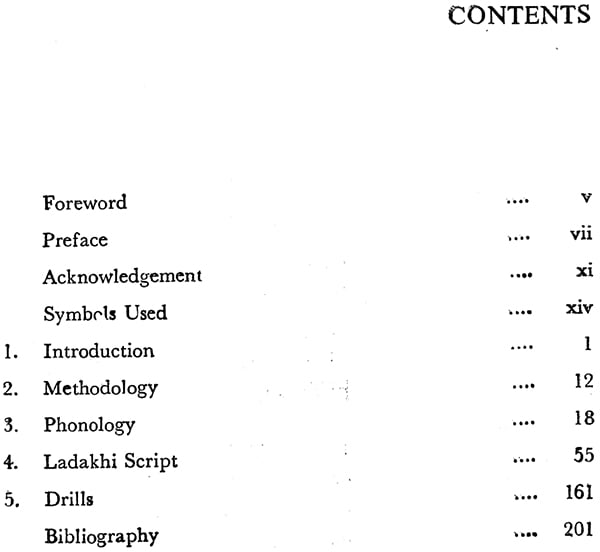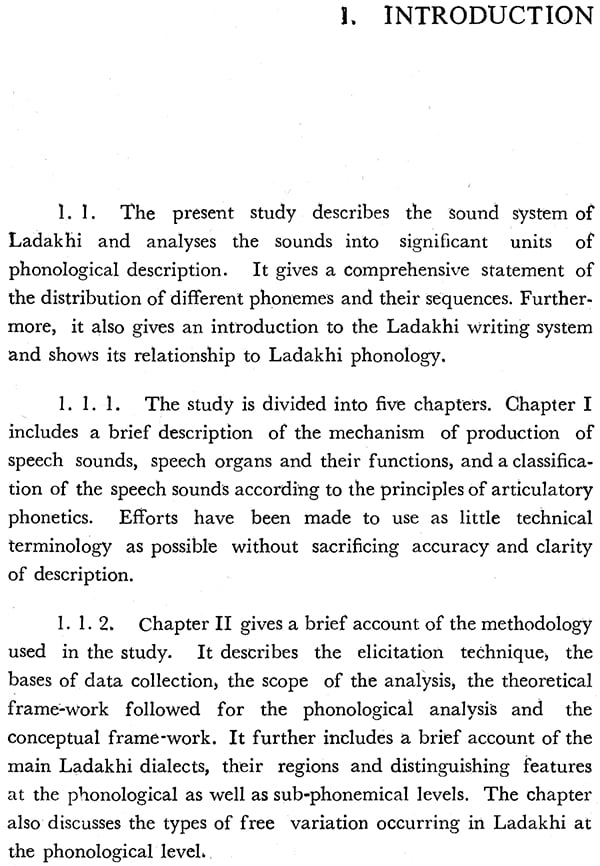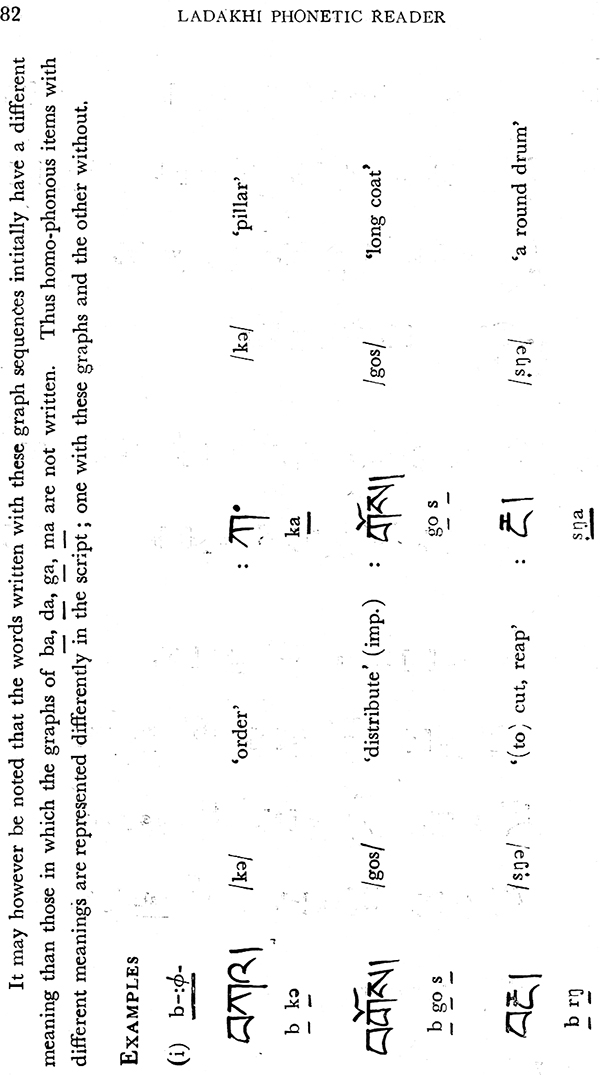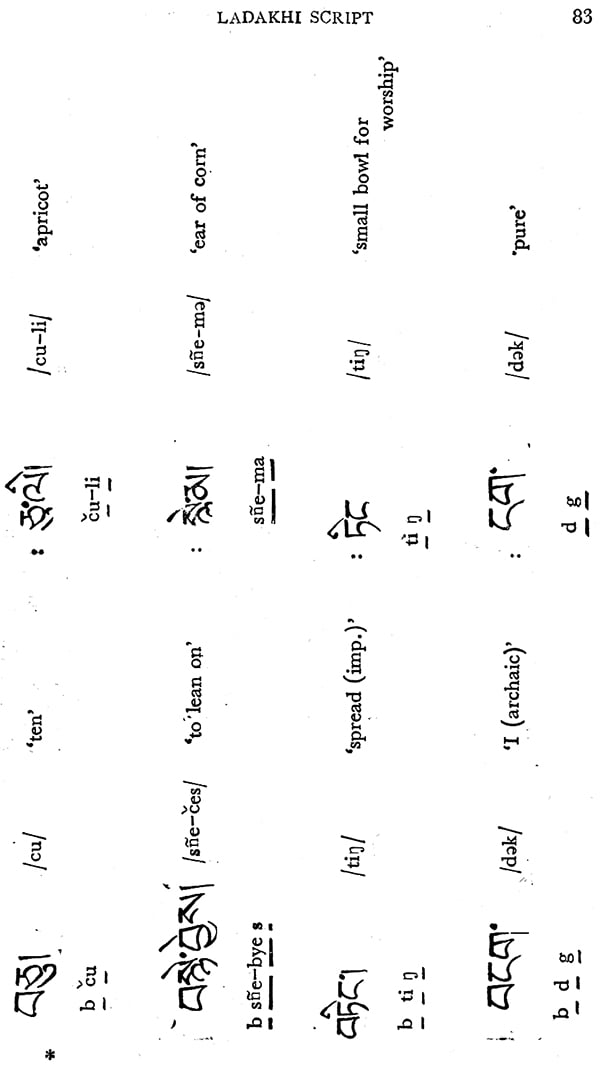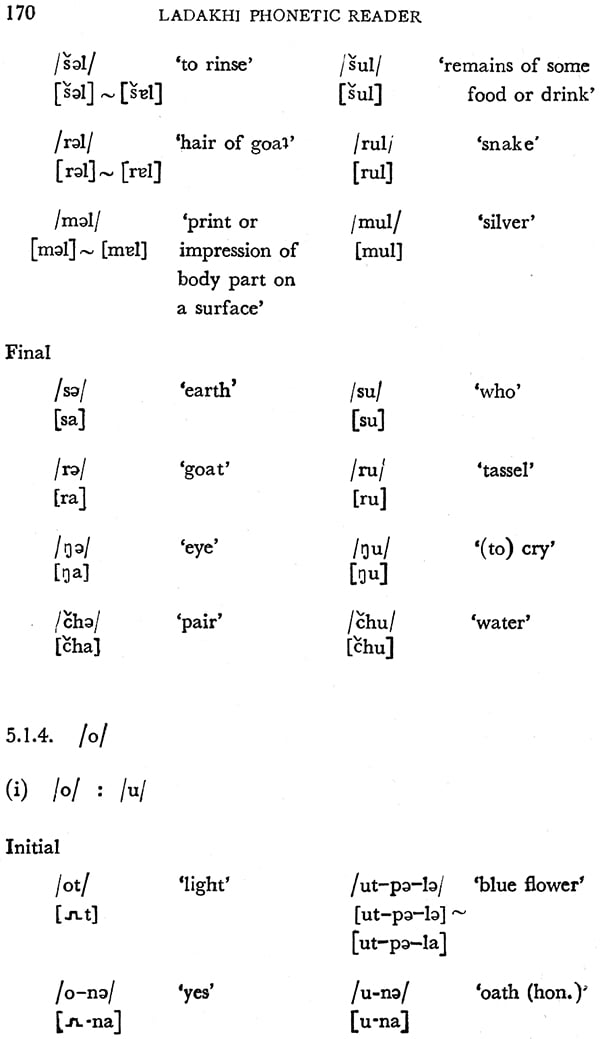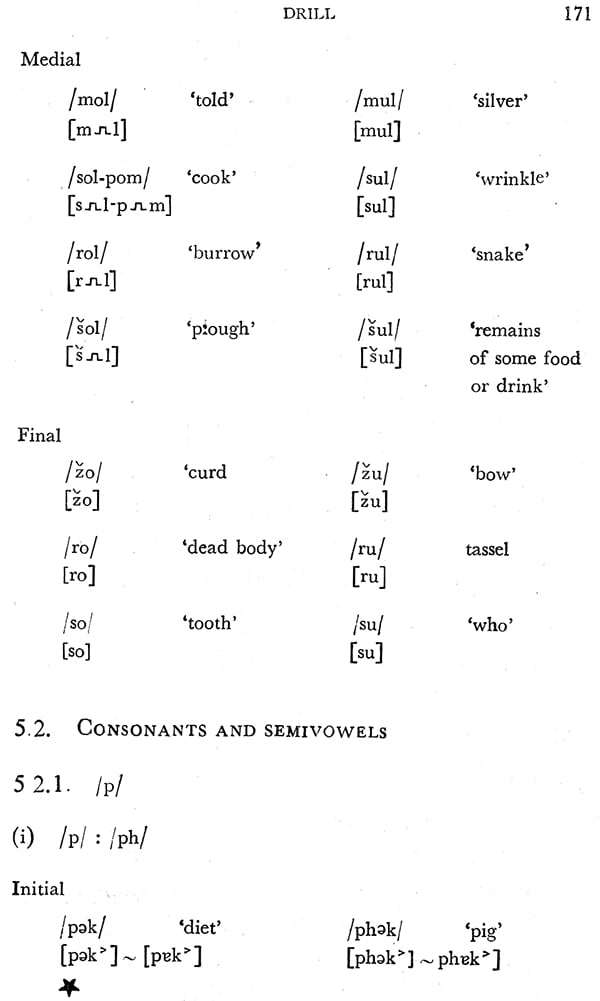
Ladakhi Phonetic Reader (An Old and Rare Book)
Book Specification
| Item Code: | NAW461 |
| Author: | Sanyukta Koshal |
| Publisher: | Central Institute Of Indian Languages, Mysore |
| Language: | English |
| Edition: | 1976 |
| Pages: | 204 |
| Cover: | PAPERBACK |
| Other Details | 8.50 X 5.50 inch |
| Weight | 250 gm |
Book Description
The Central Institute of Indian Languages was set up on the 17th July, 1969 with a view to assisting and co-ordinating the development of Indian languages. The Institute was charged with the responsibility of serving as a nucleus to bring together all the research and literary output from the various linguistic streams to a common head and narrowing the gap between basic research and developmental research in the fields of languages and linguistics in India.
The Institute and its four Regional Language Centres are thus engaged in research and teaching which led to the publication of a wide-ranging variety of materials. Preparation of materials designed for teaching/learning at different levels and suited to specific needs is one of the major areas of interest of the Institute. Basic research relating to the acquisition of language and study of language in its manifold psycho-social relations constitute another broad range of its interest. The publications will include materials produced by the members of the staff of the Central Institute of Indian Languages and its Regional Language Centres and associated scholars from universities and institutions, both Indian and foreign.
The Central Institute of Indian Languages has initiated the Phonetic Reader Series in Indian languages with a view to presenting the range of phonetic variation obtaining in this sub-continent and demonstrating the closeness of language on the basis of phonetic patterning. These Readers are biased towards learning the sound systems of languages. Thus it is hoped that this series will be of interest to both scholars who are interested in phonetic studies and practical learners of languages who wish to make a beginning in their language study.
If these materials help solving the problems in the State and help in understanding the people speaking the language, then our efforts will have been amply rewarded.
The Census of India 1961 enumerates 1652 mother tongues in the country. Besides the languages listed in the Eighth Schedule of the Indian constitution, there are many other languages, tribal as well as non-tribal, with substantial number of mother tongue speakers. Such languages belong to any one of the four language families represented in India. Ladakhi, a language belonging to the Sino-Tibetan sub-family, is one of them. Ladakhi is spoken in the Ladakh District of Jammu & Kashmir State by 52,714 speakers (according to the Census of India, 1961).
A large number of Ladakhi speakers belong to Buddhist faith. Ladakhi is prevalent mostly as a means of oral communication among its speakers. They used Tibetan language for education, literary expression and religious tradition till recently.
During the last 25 years a new generation of Ladakhi speakers has come up which has been educated in India and is now working for the development of Ladakhi language as a means of school education as well as literary expressions.
As Ladakhi is mainly a language of oral communication it has developed different regional varieties like Stopta, Shamma, Nubra, Zanskar and Leh. Among these, Leh variety in considered standard and is being developed as such. Not only are there regional variations at the phonological and grammatical levels among Ladakhi dialects, there is language variation correlated to the social stratification of the speech community. Thus there are differences between the language of the monks and the common man. There is also an impact of Tibetan on different linguistic levels of Ladakhi. Thus the Ladakhi speech situation is quite complex.
As Ladakhi is sought to be introduced at by the lower levels of education there is an urgent necessity of studying the language in all its aspects, The Central Institute of Indian languages under its Tribal and Border Languages Research Programme has under- taken a comprehensive study of Ladakhi. The Institute is preparing a phonetic reader, a synchronic grammar, a multilingual dictionary and instructional materials. The Institute has also collected a vast amount of folk literature, folk songs as well as folk narrations, which are being analysed, edited and translated for publication. It is visualised that with the completion of this intended package of research a study of background language materials in the language would have been completed.
The present study is based mainly on the Central Ladakhi variety (as spoken in Leh), which is considered as the stand aid variety. However, adequate material was collected on language variation in Ladakhi and prominent phonological as well as phonetic variations are pointed out in this Reader.
The present Phonetic Reader differs to an extent from other publications in the series in terms of the order of presentation as well as emphasis. Thus Ladakhi sounds are described only as allophones of different phonemes to which they belong. Comprehensive and detailed analysis of the Tibetan writing system as used for Ladakhi is also presented and shapes of letters used in fast and slow handwriting, etc., are also given.
**Contents and Sample Pages**
